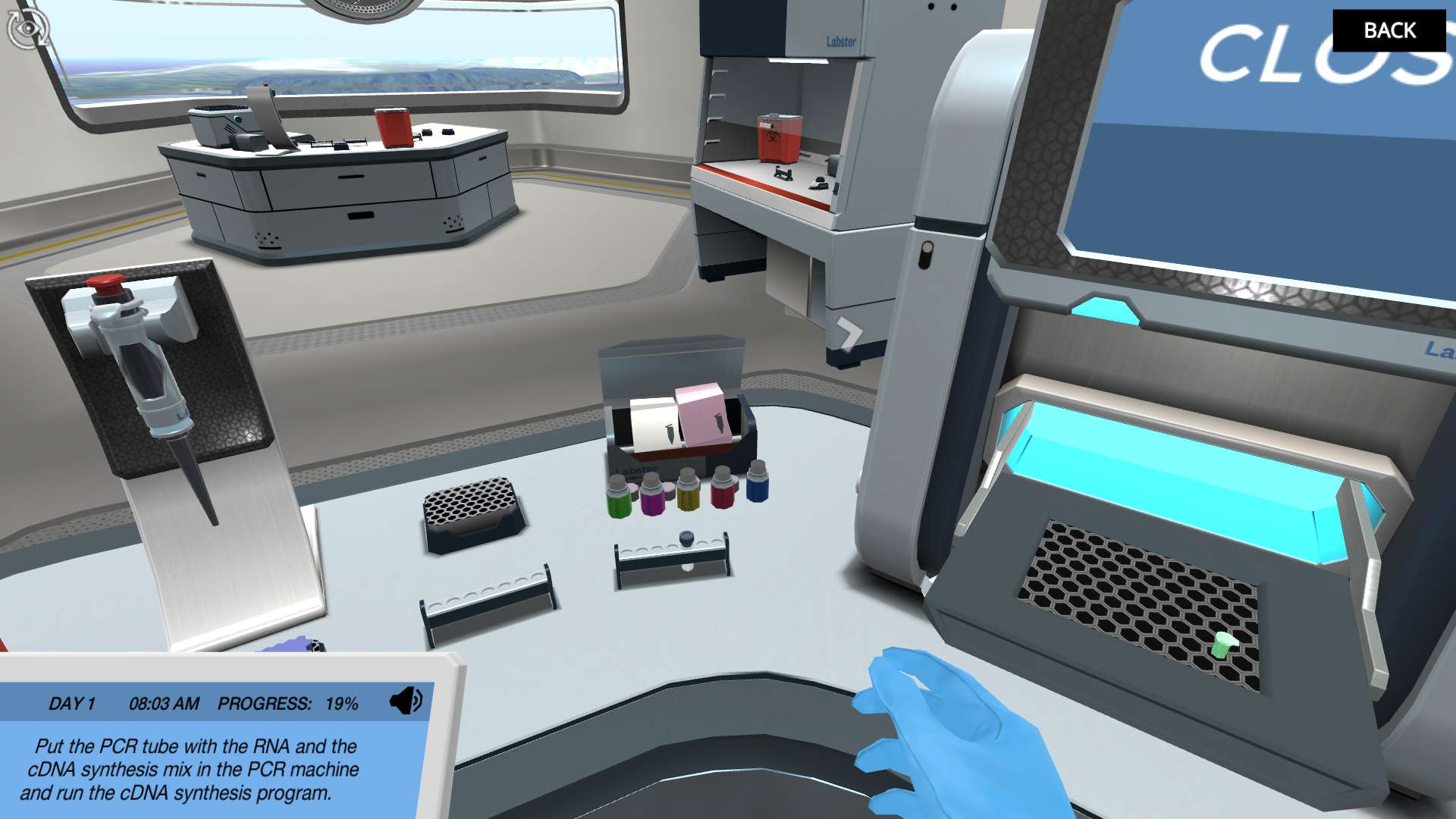Heading 1
Heading 2
Heading 3
Heading 4
Heading 5
Heading 6
Lorem ipsum dolor sit amet, consectetur adipiscing elit, sed do eiusmod tempor incididunt ut labore et dolore magna aliqua. Ut enim ad minim veniam, quis nostrud exercitation ullamco laboris nisi ut aliquip ex ea commodo consequat. Duis aute irure dolor in reprehenderit in voluptate velit esse cillum dolore eu fugiat nulla pariatur.
Block quote
Ordered list
- Item 1
- Item 2
- Item 3
Unordered list
- Item A
- Item B
- Item C
Bold text
Emphasis
Superscript
Subscript
About This Simulation
Discover Next Generation Sequencing by analyzing the mRNA from pig tissues and identify a new gene linked to obesity. Confirm your results using qPCR to analyze the expression levels of your gene!
Learning Objectives
- Prepare samples for Next Generation Sequencing
- Understand the principles behind the Next Generation Sequencing technique
- Perform a qPCR experiment with the proper controls
About This Simulation
Lab Techniques
- Next Generation Sequencing data analysis
- qPCR
- cDNA synthesis
- Sample for Preparation for Next Generation sequencing
Related Standards
- HS-LS3-2
- HS-LS3-1
- Unit 6: Gene Expression and Regulation
- Biology Unit 1: Cell Biology
Learn More About This Simulation
It is now well-known that obesity is linked to genes in your DNA – but which ones are they? In this simulation, you will learn how to sequence DNA and screen for genes that might be over-expressed in obese pigs. To do so, you will have to use state-of-the-art techniques such as Next Generation Sequencing and qPCR and perform proper data analysis to single out specific genes.
Identify a new gene linked to obesity
As part of a project to study obesity and using pig samples as a model, students will sequence the messenger RNA molecules to identify if a gene is overexpressed in an obese pig compared to a lean one. They will confirm their results with a different technique, quantitative PCR (qPCR) and learn the role of the gene in the human metabolism.
Next Generation Sequencing and qPCR
In order to sequence their samples, the student will first have to perform a RT-PCR to generate cDNA from mRNA, then prepare the samples for Next Generation Sequencing by adding the proper genetic labels. After sequencing, they will analyze their data to single out a gene that could be linked to obesity. To confirm their findings, the students will also have to design a quantitative PCR (qPCR) with the proper controls and analyze the resulting curves. This simulation allows students to see the process inside the Next Generation Sequencing machine, as well as perform two high-level techniques (sequencing and qPCR) in a very short period of time.
Publish your data
The discovery of a new gene which could partially explain the effect of obesity would be worth publishing in an eminent scientific journal. Will you be able to single out such a gene from your sequencing experiment?
For Science Programs Providing a Learning Advantage
Boost STEM Pass Rates
Boost Learning with Fun
75% of students show high engagement and improved grades with Labster
Discover Simulations That Match Your Syllabus
Easily bolster your learning objectives with relevant, interactive content
Place Students in the Shoes of Real Scientists
Practice a lab procedure or visualize theory through narrative-driven scenarios


FAQs
Find answers to frequently asked questions.
Heading 1
Heading 2
Heading 3
Heading 4
Heading 5
Heading 6
Lorem ipsum dolor sit amet, consectetur adipiscing elit, sed do eiusmod tempor incididunt ut labore et dolore magna aliqua. Ut enim ad minim veniam, quis nostrud exercitation ullamco laboris nisi ut aliquip ex ea commodo consequat. Duis aute irure dolor in reprehenderit in voluptate velit esse cillum dolore eu fugiat nulla pariatur.
Block quote
Ordered list
- Item 1
- Item 2
- Item 3
Unordered list
- Item A
- Item B
- Item C
Bold text
Emphasis
Superscript
Subscript
A Labster virtual lab is an interactive, multimedia assignment that students access right from their computers. Many Labster virtual labs prepare students for success in college by introducing foundational knowledge using multimedia visualizations that make it easier to understand complex concepts. Other Labster virtual labs prepare learners for careers in STEM labs by giving them realistic practice on lab techniques and procedures.
Labster’s virtual lab simulations are created by scientists and designed to maximize engagement and interactivity. Unlike watching a video or reading a textbook, Labster virtual labs are interactive. To make progress, students must think critically and solve a real-world problem. We believe that learning by doing makes STEM stick.
Yes, Labster is compatible with all major LMS (Learning Management Systems) including Blackboard, Canvas, D2L, Moodle, and many others. Students can access Labster like any other assignment. If your institution does not choose an LMS integration, students will log into Labster’s Course Manager once they have an account created. Your institution will decide which is the best access method.
Labster is available for purchase by instructors, faculty, and administrators at education institutions. Purchasing our starter package, Labster Explorer, can be done using a credit card if you are located in the USA, Canada, or Mexico. If you are outside of North America or are choosing a higher plan, please speak with a Labster sales representative. Compare plans.
Labster supports a wide range of STEM courses at the high school, college, and university level across fields in biology, chemistry, physics, and health sciences. You can identify topics for your courses by searching our Content Catalog.















